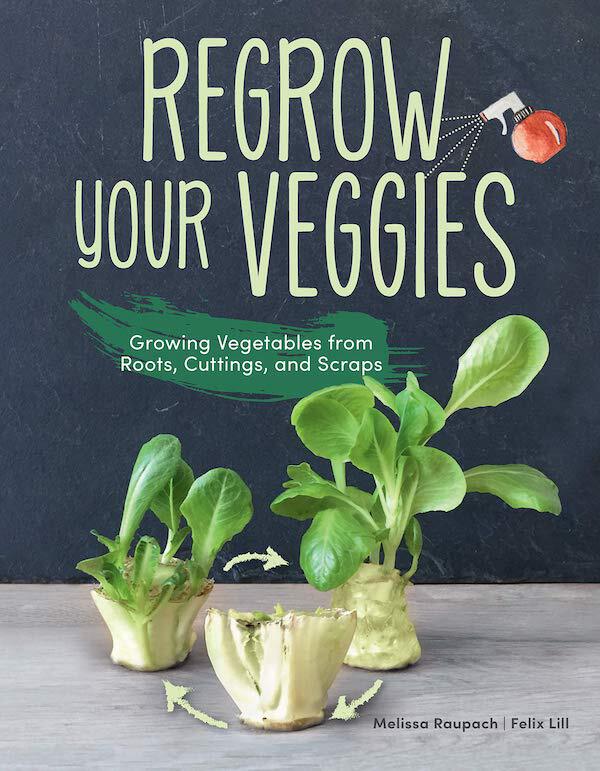 Regrow Your Veggies
Regrow Your Veggies

Growing Vegetables from Roots, Cuttings and Scraps
By Melissa Raupach and Felix Lil
CompanionHouse Books, February, 2020
I bought “Regrow Your Veggies” in mid-March, just a few days before my local bookstore closed in response to stay-at-home directives during the COVID pandemic. I wasn’t thinking about emergency food sources but rather was responding to the urge I get every year around that time to start growing things. I mostly grow herbs and vegetables, and as mid-March is too early to plant much where I live in Chicago, I saw the book as a way of satisfying the too-early gardening urge. But it could help minimize trips to the store during a pandemic, too.
The book includes instructions for re-growing 21 vegetables and I tried three of them.
Romaine lettuce is regrown by saving the base that holds the bunch of leaves together, soaking it in a jar of shallow water, then planting it after it grows some roots. I got off to a good start, even regrowing some nice leaves while the plant base was soaking, which I harvested and added to a salad. The plant was ready for planting around the first or second week of April, and since lettuce likes cool temperatures, I put it in a pot outside.
Unfortunately, it went moribund, but I don’t think the problem had anything to do with how I started the plant. Maybe I harvested those leaves too soon. More likely, it may have been the insects that also decimated all the leaves on some herb plants that I bought around the same time.
Having learned my lesson, I tried a different approach with the next thing I tried re-growing – celery. Here, too, you’re supposed to soak the base that holds the bunch of stalks in water until roots appear, which took longer than the week or so that the book suggested, but which did eventually appear. I decided to keep the celery indoors after I planted it – and I even took the time to sterilize the potting soil by baking it in a 400-degree oven for 30 minutes in case it was insect larvae in the soil that decimated the lettuce.
The book also recommended spritzing the celery water regularly, which I’ve been doing. It’s not big enough to eat yet, but so far, so good.
I was going to leave my vegetable re-growing at that for a while when I found some potatoes that were already sprouting in my hanging potato and onion basket. I followed the book’s instructions for cutting them in half, letting them dry out a bit and then planting them. I won’t know how well that worked until harvest season, but I’m hopeful – especially considering that I used the sterilized soil here, too.
I would recommend “Regrow Your Veggies.” It has lots of illustrations and even includes some ideas for cooking your vegetables when they’re ready. There’s also a graphic for each vegetable indicating difficulty level, amount of light required, etc. Some staple vegetables included: onions, leeks, scallions. Some of the more unusual vegetables/spices covered: Jerusalem artichokes, galangal, turmeric.
Reviewed by Joan Engebretson, who, when not consulting and writing, spends time cooking and gardening in Chicago.

